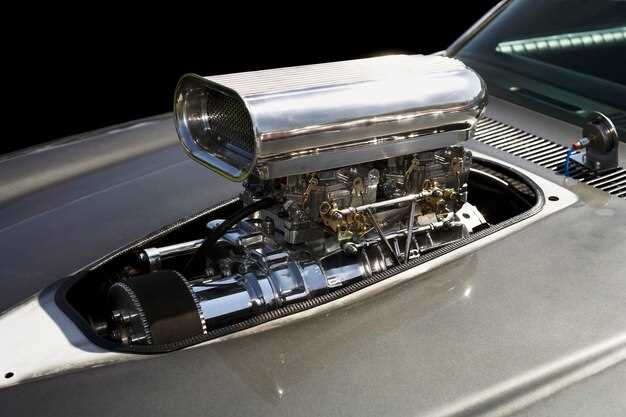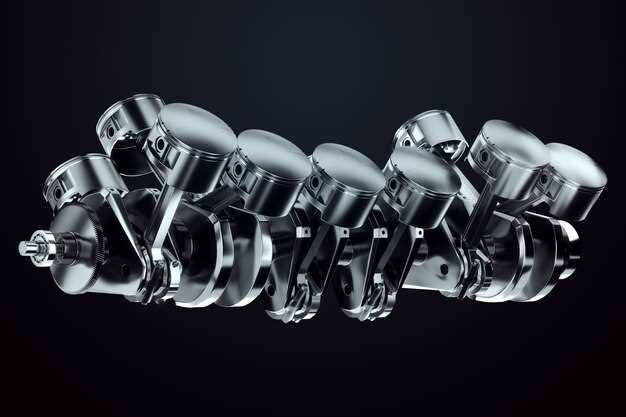
In the world of muscle cars, performance is paramount, and enthusiasts often debate the merits of different methods for enhancing engine power. Two popular options that consistently grab attention are superchargers and turbochargers. Both technologies offer distinct advantages and challenges that can significantly impact a car’s performance characteristics, driving experience, and overall capabilities.
The supercharger operates by compressing the incoming air into the engine, providing immediate boost from the moment the driver presses the accelerator. This direct connection to the crankshaft means that power delivery is instantaneous and linear, appealing to those who crave immediate throttle response and a rich performance feel. However, because it is mechanically driven, a supercharger can create additional load on the engine, which may affect fuel efficiency in some applications.
On the other hand, the turbocharger uses exhaust gases to spool a turbine that compresses air and forces it into the engine, making it more efficient in utilizing wasted energy. This can result in higher power outputs and improved fuel economy, particularly at higher RPMs. Nevertheless, the lag associated with turbochargers can lead to a less predictable power delivery, which might not resonate well with muscle car enthusiasts who prefer the classic feel of immediate responsiveness.
Ultimately, the choice between a supercharger and a turbocharger hinges on the specific performance goals of the muscle car owner. By understanding the fundamental differences between these forced induction systems, enthusiasts can make more informed decisions about how to enhance the power and performance of their vehicles.
Understanding the Mechanisms of Superchargers
Superchargers are devices that enhance an engine’s performance by forcing more air into the combustion chamber. This process increases the engine’s efficiency and power output. Unlike turbochargers, which use exhaust gases to spin a turbine and compress incoming air, superchargers are mechanically driven, typically by a belt connected to the engine’s crankshaft. This direct connection allows for near-instantaneous power delivery, which is crucial for muscle cars demanding rapid acceleration.
The primary types of superchargers are positive displacement and centrifugal. Positive displacement superchargers, such as roots and twin-screw designs, compress air in a fixed volume and are known for delivering consistent boost at all RPMs. This feature makes them highly effective for achieving low-end torque, which is beneficial in muscle cars that require strong initial power for quick launches.
Centrifugal superchargers, on the other hand, use a spinning impeller to draw and compress air. As engine RPMs increase, the airflow and resulting boost also rise, making them more efficient at higher engine speeds. While they can produce significant power gains, they may not deliver the immediate torque associated with positive displacement types, requiring careful matching with the engine’s characteristics.
The installation of a supercharger generally involves additional cooling systems, fuel system adjustments, and management of the vehicle’s electronic controls to accommodate the increased air intake and power output. Supercharging can lead to better performance metrics, but it also necessitates close attention to engine durability given the higher stress levels placed on components.
Overall, superchargers provide a straightforward approach to increase horsepower and torque without the lag commonly associated with turbochargers. For muscle car enthusiasts, the immediate response of a supercharged engine often translates to an exhilarating driving experience, making it a preferred choice for those seeking raw power and acceleration on demand.
Identifying Performance Benefits of Turbochargers
Turbochargers offer several performance benefits that make them a popular choice for muscle cars looking to enhance power and efficiency. Unlike superchargers, which draw power from the engine’s crankshaft, turbochargers utilize exhaust gases to spin a turbine, which creates forced induction. This harnessing of exhaust energy allows turbochargers to produce greater power without significantly impacting engine performance at lower RPMs.
One of the primary advantages of turbochargers is their ability to increase horsepower dramatically while improving fuel efficiency. By forcing more air into the combustion chamber, turbochargers enable an engine to burn more fuel, resulting in enhanced power output. This is particularly beneficial for muscle car enthusiasts seeking high performance without sacrificing fuel economy during everyday driving.
Another notable performance benefit lies in the versatility of turbochargers. They can be tuned to meet various driving styles and power needs, allowing for customization based on individual preferences. Furthermore, modern turbocharging technology has advanced significantly, minimizing turbo lag–a common drawback in older models. This means drivers can experience a more immediate power delivery, similar to what a supercharger offers, but with the added advantage of efficiency.
Turbochargers also provide a wider power band compared to superchargers. This allows the engine to maintain optimal performance across a broader range of RPMs, resulting in a more responsive driving experience. This improved throttle response can enhance acceleration, making turbocharged muscle cars feel quicker under varying driving conditions.
Finally, turbochargers can contribute to a lighter overall vehicle weight. Since turbocharging systems can be smaller than supercharging systems, they allow for better weight distribution and potentially lighter engine components. This reduction in weight can further enhance handling and performance, making turbocharged muscle cars not just more powerful but also more agile on the road.
Evaluating Installation Requirements for Both Options
When considering superchargers and turbochargers for muscle cars, it’s essential to understand the installation requirements for each option. This information will help in making an informed decision based on compatibility and performance needs.
Here are key factors to consider for both superchargers and turbochargers:
-
Supercharger Installation

- Mounting Space: Superchargers typically require more space in the engine bay due to their size and direct connection to the engine crankshaft.
- Drive System: Installation often involves modifying the serpentine belt system to accommodate the supercharger drive pulley, which may require additional parts.
- Cooling System Modification: Depending on the type of supercharger, you may need to enhance the cooling system, particularly for intercooled systems.
- Tuning Needs: After installation, appropriate ECU tuning is crucial to optimize performance and ensure engine safety.
-
Turbocharger Installation
- Exhaust System Integration: Turbocharger installation usually requires significant modifications to the exhaust manifold and routing, as the system relies on exhaust gases for operation.
- Boost Control System: A properly installed turbo system necessitates the incorporation of wastegates and blow-off valves, and their setup requires careful planning.
- Intercooler Placement: A turbo setup often entails the installation of an intercooler, which can complicate the front-end layout of the vehicle.
- Oil Supply System: Turbos need a dedicated oil supply for lubrication, adding complexity to the overall installation process.
In summary, while both superchargers and turbochargers offer considerable performance enhancements for muscle cars, their installation processes differ significantly. Superchargers demand direct engine integration and cooling modifications, while turbochargers require exhaust system alterations and additional components for effective operation. It’s crucial to assess your vehicle’s current setup, required modifications, and the desired performance outcomes before proceeding with either option.
Analyzing Cost Factors for Superchargers vs Turbochargers
When evaluating the cost factors of superchargers and turbochargers for muscle cars, several elements must be considered, including initial investment, installation expenses, and maintenance requirements.
The initial cost of superchargers typically ranges from $3,000 to $8,000, depending on the brand and performance level. This price often reflects the simplicity of installation, which can be a direct bolt-on for many vehicles, avoiding extensive modifications. Turbochargers, however, can vary significantly in price, starting from $1,500 and going upwards of $5,000, but the total cost may increase due to the need for additional components such as intercoolers and pipework, which are essential for optimal performance.
Installation costs play a vital role in the overall expense. Superchargers generally require less extensive labor, often resulting in lower installation fees. In contrast, the installation of a turbocharger can become costly; the additional parts and potential engine modifications may require a skilled technician, increasing labor charges significantly. Turbocharger setups also demand more precise tuning to ensure reliability and efficiency, further contributing to installation costs.
Maintenance is another critical aspect to consider. Superchargers tend to require routine maintenance, including belt replacements and inspections, which can add up over time. However, they often have a longer lifespan due to fewer moving parts under stress. Turbochargers, while efficient, can face issues such as boost leaks and oil failures, necessitating more frequent servicing and potential replacements of components like wastegates and intercoolers.
Fuel costs must also be taken into account. Turbochargers, known for their efficiency in generating power from exhaust gases, can lead to improved fuel economy. On the other hand, superchargers may consume more fuel due to their direct draw from the engine’s power supply, impacting long-term operating costs.
In conclusion, while initial purchase prices for turbochargers may appear lower, the overall cost can escalate due to additional components and installation needs. Superchargers, while potentially higher in upfront expenses, often save money in installation and maintenance. Ultimately, the choice between superchargers and turbochargers should consider both the performance goals and the total cost of ownership over time.
Exploring Compatibility with Various Muscle Car Models

When considering the integration of a supercharger into a muscle car, compatibility with the vehicle’s design and engine is of utmost importance. Different muscle car models vary significantly in their architecture, engine size, and overall tuning, which can affect how a supercharger performs.
For example, popular models like the Ford Mustang and Chevrolet Camaro have well-documented aftermarket support for superchargers. Mustang enthusiasts often opt for positive displacement superchargers that maximize low-end torque, enhancing the already robust performance of the GT and Shelby variants. Similarly, Camaro models benefit from centrifugal superchargers that provide a smooth power curve and significant gains in horsepower.
Moreover, classic muscle cars such as the Dodge Charger or Plymouth Barracuda might require more custom solutions. These vehicles often necessitate modifications to the intake manifold, engine bay, and even pulley systems to accommodate modern superchargers. It’s essential to research specific kits designed for older models to ensure optimal fitment and performance.
Additionally, considerations such as horsepower goals and intended driving conditions play a crucial role in selecting the right supercharger. For example, drag racing enthusiasts might prefer superchargers that provide rapid boosts of power, whereas street-driven muscle cars might prioritize reliability and drivability at lower RPMs.
In conclusion, while many muscle car models can effectively integrate superchargers, the success of such an upgrade hinges on careful evaluation of compatibility factors, including engine layout, desired performance characteristics, and the specific needs of the vehicle. Proper planning and selection not only enhance performance but also ensure longevity and reliability of the muscle car.
Assessing Maintenance Needs and Longevity of Each System
When considering the performance enhancements of muscle cars, both superchargers and turbochargers present unique maintenance requirements and longevity considerations that directly affect their lifespan and reliability.
Turbochargers utilize exhaust gases to spool their turbines, which can lead to a buildup of carbon deposits over time. Regular maintenance is essential to prevent issues such as turbo lag and reduced efficiency. Periodic oil changes and ensuring proper lubrication are vital, as inadequate oil supply can severely damage the turbocharger. Furthermore, the heat generated during operation necessitates regular inspection of the cooling system to maintain optimal temperatures.
In contrast, superchargers are typically more straightforward in terms of maintenance. They rely on a belt-driven system connected to the engine, which means that routine inspections of the belt and associated components are crucial. However, the absence of exhaust dependency makes them less prone to carbon buildup, potentially translating to a longer lifespan with less frequent service requirements.
Regarding longevity, turbochargers often have a lifespan ranging from 100,000 to 150,000 miles if properly maintained. Their durability can be impacted by how the vehicle is driven; high-performance driving can lead to accelerated wear. On the other hand, superchargers, with their simpler mechanical operation, can often exceed this range if maintained correctly, with some systems lasting significantly longer under normal driving conditions.
In summary, while both systems offer substantial performance benefits, the turbocharger generally requires more vigilant maintenance to avoid common pitfalls, whereas the supercharger provides a more user-friendly experience with potentially greater longevity. Enthusiasts must weigh these factors according to their expected usage and maintenance capabilities when selecting between these two performance options.




